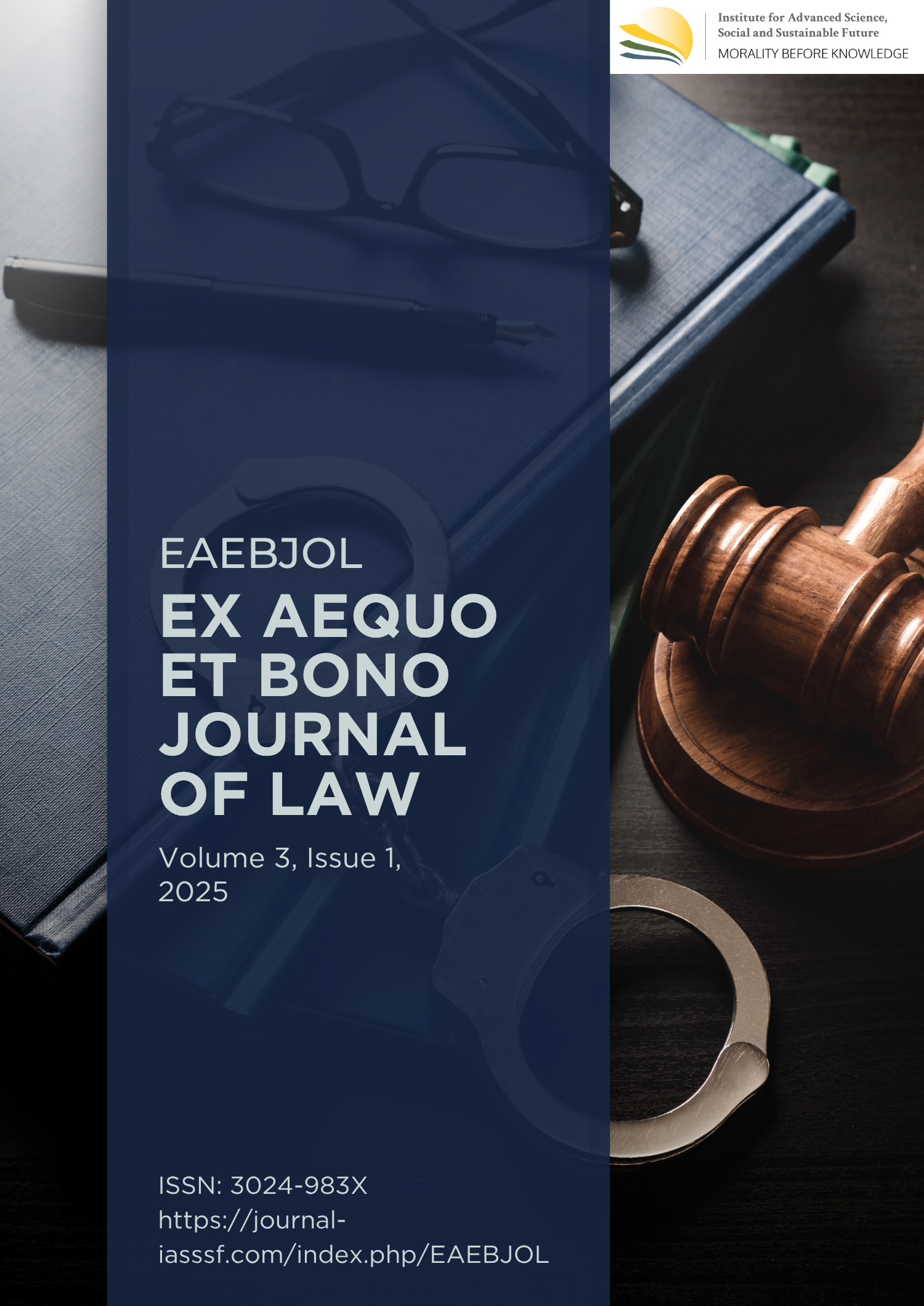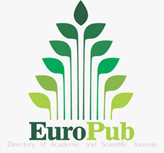Leveraging economic intelligence and stakeholder collaboration to eradicate illegal plain cigarettes
DOI:
https://doi.org/10.61511/eaebjol.v3i1.2025.1919Keywords:
excise, illegal cigarettes, economic intelligenceAbstract
Background: Indonesia ranks third globally in the number of smokers, despite government efforts to reduce cigarette consumption. The continued rise in smoking is linked to the circulation of illegal cigarettes, which threaten public health, state revenue, and the national tobacco industry. This study aims to examine the distribution dynamics of illicit cigarettes and analyze stakeholder strategies to combat the issue. Methods: A qualitative approach was used, involving interviews, document analysis, and literature review. Data were analyzed thematically to explore patterns in stakeholder roles and motivations. Findings: Economic incentives drive the illegal cigarette trade, which disrupts legal markets and undermines tax revenue. Stakeholder participation varies by institutional interest and authority, influencing enforcement outcomes. Weak coordination and limited use of economic intelligence were identified as key challenges. Conclusion: Addressing illegal cigarette distribution requires stronger stakeholder collaboration and strategic use of economic intelligence. Novelty/Originality of this article: This study provides new insights into the role of economic intelligence and stakeholder dynamics in tackling illicit cigarette trade in Indonesia.
References
Agaku, I. T., Blecher, E., Filippidis, F. T., Gibson, L., & Vardavas, C. I. (2016). Impact of cigarette price differences across the entire European Union on cross-border purchase of tobacco products among adult cigarette smokers. Tobacco Control, 25(3), 333–340. https://doi.org/10.1136/tobaccocontrol-2014-051919
Aziani, A., Calderoni, F., & Dugato, M. (2020). Explaining the consumption of illicit cigarettes. Journal of Quantitative Criminology, 36(2), 305–333. https://doi.org/10.1007/s10940-019-09420-6
Bryson, J. M. (2004). What to do when stakeholders matter: A guide to stakeholder identification and analysis techniques. Public Management Review, 6(1), 21–53. https://doi.org/10.1080/14719030410001675722
CNBC Indonesia. (2022, November 16). Bikin shock! Warga RI beli rokok 2x lebih gede dari telur. CNBC Indonesia. https://www.cnbcindonesia.com/news/20221116160543-4-388624/bikin-shock-warga-ri-beli-rokok-2x-lebih-gede-dari-telur
Curti, D., Shang, C., Ridgeway, W., & Chaloupka, F. J. (2015). The use of legal, illegal and roll-your-own cigarettes to increasing tobacco excise taxes and comprehensive tobacco control policies: Findings from the ITC Uruguay survey. Tobacco Control, 24(Suppl 3), iii17–iii24. https://doi.org/10.1136/tobaccocontrol-2014-051890
Divino, J. A. C. do A., Tiezzi, S., & Araújo, L. R. (2020). Assessing tobacco tax reform and effects of the illicit market in Brazil. Universidade Católica de Brasília. https://repositorio.ucb.br
Golestan, Y. P., Armoon, B., Karimy, M., & Bayat, A. H. (2021). The effect of price on cigarette consumption, distribution, and sale in Tehran: A qualitative study. BMC Public Health, 21(1), 230. https://doi.org/10.1186/s12889-021-10244-1
Goodchild, M., Sinha, P., Gill Munish, V., & Tullu, F. (2020). Estimating illicit cigarette consumption using a tax-gap approach, India. Bulletin of the World Health Organization, 98(9), 585–592. https://doi.org/10.2471/BLT.19.239061
Joossens, L., & Raw, M. (2012). From cigarette smuggling to illicit tobacco trade. Tobacco Control, 21(2), 230–234. https://doi.org/10.1136/tobaccocontrol-2011-050205
Juarez, B. S. de M., Reynales-Shigematsu, L. M., & Thrasher, J. F. (2021). Measuring the illicit cigarette market in Mexico: A cross-validation of two methodologies. Tobacco Control, 30(5), 493–498. https://doi.org/10.1136/tobaccocontrol-2019-055449
Kaplan, B., Navas-Acien, A., & Cohen, J. E. (2018). The prevalence of illicit cigarette consumption and related factors in Turkey. Tobacco Control, 27(4), 442–447. https://doi.org/10.1136/tobaccocontrol-2016-053369
Kasri, R. A., Syachbrani, W., & Amalia, F. (2021). New evidence of illicit cigarette consumption and government revenue loss in Indonesia. Tobacco Induced Diseases, 19, 58. https://doi.org/10.18332/tid/136794
Khan, A. (2020). Illicit cigarette trade in the cities of Pakistan: Comparing findings between the consumer and waste recycle store surveys. Tobacco Control, 29(s4), s276–s281. https://doi.org/10.1136/tobaccocontrol-2019-055313
Kupatadze, A. (2021). Corruption and illicit tobacco trade. Journal of Illicit Economies and Development, 3(2), 1–14. https://doi.org/10.31389/jied.72
Kurniati, D. (2022, 13 December). Penindakan rokok illegal terus meningkat, Sri Mulyani beberkan datanya. DDTC News.
Lavares, M. P. (2022). Analysing the trend of illicit tobacco in the Philippines from 1998 to 2018. Tobacco Control, 31(5), 645–650. https://doi.org/10.1136/tobaccocontrol-2020-056151
Liber, A. C., Ross, H., Omar, M., & Chaloupka, F. J. (2015). The impact of the Malaysian minimum cigarette price law: Findings from the ITC Malaysia. Tobacco Control, 24(Suppl 3), iii83–iii87. https://doi.org/10.1136/tobaccocontrol-2014-051910
Little, M. A., Ross, H., Bakhturidze, G., & Kvernadze, T. (2020). Illicit tobacco trade in Georgia: Prevalence and perceptions. Tobacco Control, 29(s4), s243–s249. https://doi.org/10.1136/tobaccocontrol-2019-055301
Little, M. A., Ross, H., Bakhturidze, G., & Kvernadze, T. (2021). Analysis of the illicit tobacco market in Georgia in response to fiscal and non-fiscal tobacco control measures. Tobacco Control, 30(s5), s8–s14. https://doi.org/10.1136/tobaccocontrol-2020-055989
Liutkutė-Gumarov, V., Veryga, A., Scollo, M., Stoklosa, M., & Ross, H. (2020). Illicit tobacco in Lithuania: A cross-sectional survey. International Journal of Environmental Research and Public Health, 17(9), 3204. https://doi.org/10.3390/ijerph17093204
Maldonado, N., Iglesias, R. M., & Thrasher, J. F. (2020a). Measuring illicit cigarette trade in Colombia. Tobacco Control, 29(Suppl 4), s260–s266. https://doi.org/10.1136/tobaccocontrol-2019-055333
Maldonado, N., Iglesias, R. M., & Thrasher, J. F. (2020b). Smoke signals: Monitoring illicit cigarettes and smoking behaviour in Colombia to support tobacco taxes. Tobacco Control, 29(Suppl 4), s267–s273. https://doi.org/10.1136/tobaccocontrol-2019-055334
Ministry of Health of the Republic of Indonesia. (2022, 1 June). Temuan Survei GATS: Perokok Dewasa di Indonesia Naik 10 Tahun Terakhir. https://kemkes.go.id/id/rilis-kesehatan/temuan-survei-gats-perokok-dewasa-di-indonesia-naik-10-tahun-terakhir
Ministry of Industry. (2016). Regulation of the Minister of Industry Number 14/M-IND/PER/2/2016 concerning technical criteria for the import of capital goods in non-new circumstances. https://peraturan.bpk.go.id
Morais, S. N., Colombage, S., & Nalaka, C. W. (2018). A baseline study on the illicit cigarette market and the resulting tax implications for Sri Lanka. Imashi Publications.
Nguyen, H. T. T., Giang, L. T., & Pham, T. N. (2019a). Empirical analysis of cigarette tax avoidance and evasion in Vietnam. The Institute of Public Policy and Management. http://ippm.vn
Nguyen, M. T., Dao, T. M., Do, T. T., & Dinh, T. N. (2014). The empirical analysis of cigarette tax avoidance and illicit trade in Vietnam 1998–2010. PLOS ONE, 9(1), e87272. https://doi.org/10.1371/journal.pone.0087272
Nguyen, M. T., Giang, L. T., & Dinh, T. N. (2019b). Illicit cigarette consumption and government revenue loss in Vietnam: Evidence from a primary data approach. International Journal of Environmental Research and Public Health, 16(1), 107. https://doi.org/10.3390/ijerph16010107
Paraje, G. (2018). Illicit cigarette trade in five South American countries: A gap analysis for Argentina, Brazil, Chile, Colombia and Peru. Oxford University Press. https://doi.org/10.1093/ije/dyy128
Pizarro, M. E., Thrasher, J. F., Reynales-Shigematsu, L. M., & Maldonado, N. (2022). Illicit tobacco trade: Empty pack survey in eight Argentinean cities. Tobacco Control, 31(6), 689–695. https://doi.org/10.1136/tobaccocontrol-2021-056660
Pravitasari, Y. A. (2014). Analisis ekonomi kejahatan pada transaksi rokok tanpa cukai (Studi kasus di Kota Blitar). Bachelor’s thesis, Universitas Brawijaya. Universitas Brawijaya Repository. http://repository.ub.ac.id
Reed, M. S., Graves, A., Dandy, N., Posthumus, H., Hubacek, K., Morris, J., Prell, C., Quinn, C. H., & Stringer, L. C. (2009). Who’s in and why? A typology of stakeholder analysis methods for natural resource management. Journal of Environmental Management, 90(5), 1933–1949. https://doi.org/10.1016/j.jenvman.2009.01.001
Ross, H., Vellios, N., Batmunkh, T., & Enkhtsogt, T. (2015). Approaches for controlling illicit tobacco trade — Nine countries and the European Union. Morbidity and Mortality Weekly Report, 64(20), 528–531. https://www.cdc.gov/mmwr/preview/mmwrhtml/mm6420a3.htm
Ross, H., Vellios, N., Batmunkh, T., & Enkhtsogt, T. (2020). Impact of tax increases on illicit cigarette trade in Mongolia. Tobacco Control, 29(s4), s251–s256. https://doi.org/10.1136/tobaccocontrol-2019-055335
Schafferer, C., Melberg, H. O., John, R. M., & Gartner, C. E. (2018). A simulation impact evaluation of a cigarette excise tax increase on licit and illicit cigarette consumption and tax revenue in 36 European countries. Public Health, 162, 48–57. https://doi.org/10.1016/j.puhe.2018.05.014
Shakya, S., Maskey, R., & Sharma, S. (2021). Extent of illicit cigarette trade in Nepal. Nepal Development Research Institute. https://ndri.org.np
Shaw, M., & Reitano, T. (2020). Overcoming illicit trade’s corrosive effect in developing economies. Atlantic Council. https://www.atlanticcouncil.org/in-depth-research-reports/report/overcoming-illicit-trades-corrosive-effect-in-developing-economies/
Sunaryo, T. (2013). Kretek pusaka nusantara. Serikat Kerakyatan Indonesia (SAKTI).
Szklo, A. S., Iglesias, R. M., Souza, M. C., & Pinto, M. (2022). Cross-validation of four different survey methods used to estimate illicit cigarette consumption in Brazil. Tobacco Control, 31(6), 696–703. https://doi.org/10.1136/tobaccocontrol-2021-056623
Triyono, L. (2020, June 1). Epidemi tembakau: Jumlah perokok Indonesia nomor 3 di dunia. VOA Indonesia. https://www.voaindonesia.com/a/jumlah-perokok-di-indonesia-nomor-3-di-dunia/6597540.html
van Walbeek, C., Hill, R., & Filby, S. (2023). Quitting behavior during the tobacco sales ban in South Africa: Results from a broadly nationally representative survey. Tobacco Induced Diseases, 21, 102. https://doi.org/10.18332/tid/168594
Downloads
Published
How to Cite
Issue
Section
Citation Check
License
Copyright (c) 2025 Bayu Indradinata, Palupi Lindiasari Samputra, Sundawan Salya

This work is licensed under a Creative Commons Attribution 4.0 International License.














